Anlässlich des Gesamtprojekttreffens des europäischen Forschungsvorhabens SEAMLESS am 11. und 12. Juni 2024 hieß das DST das gesamte Konsortium in Duisburg zu Gast und präsentierte dabei sein breites Forschungsportfolio – weit über das bloße Schiffbau-Versuchswesen hinaus.

Das Konsortium des im europäischen Forschungsprogramm Horizont Europa geförderten Forschungsvorhabens SEAMLESS kam vom 10. bis zum 12. Juni in Duisburg zusammen, um zum einen das dritte Konsortialtreffen und zum anderen zahlreiche Workshops im Rahmen der Projektarbeit durchzuführen.
Nach einer ersten atmosphärischen Einstimmung mit einem gemeinsamen Abendessen im Duisburger Innenhafen am 10. Juni begann das Konsortialtreffen mit dem Grußwort der Duisburger Hafen AG. Jan-Christoph Maaß hob dabei die Bedeutung des Standorts Duisburg als Hauptstadt der deutschen Binnenschifffahrt und Heimat des größten Binnenhafens Europas hervor.
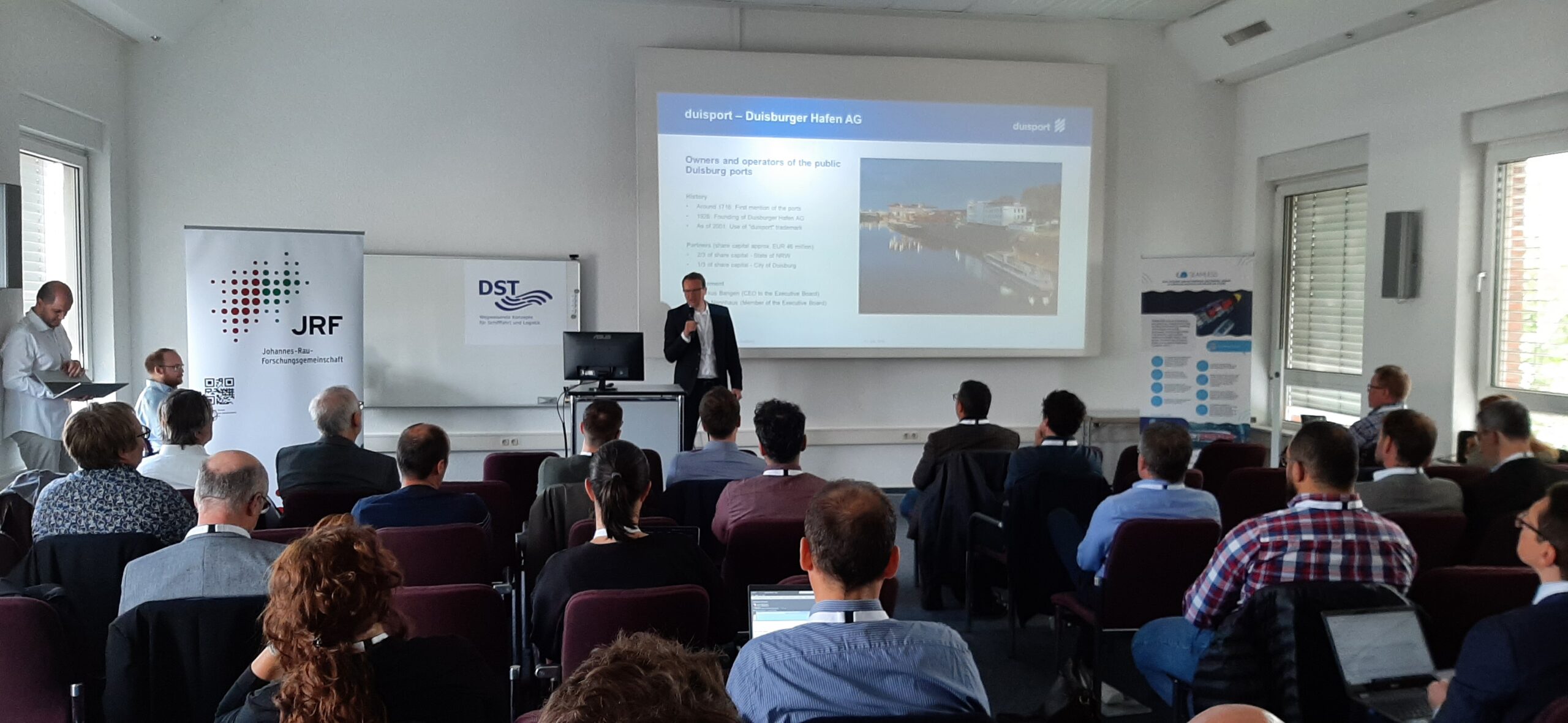
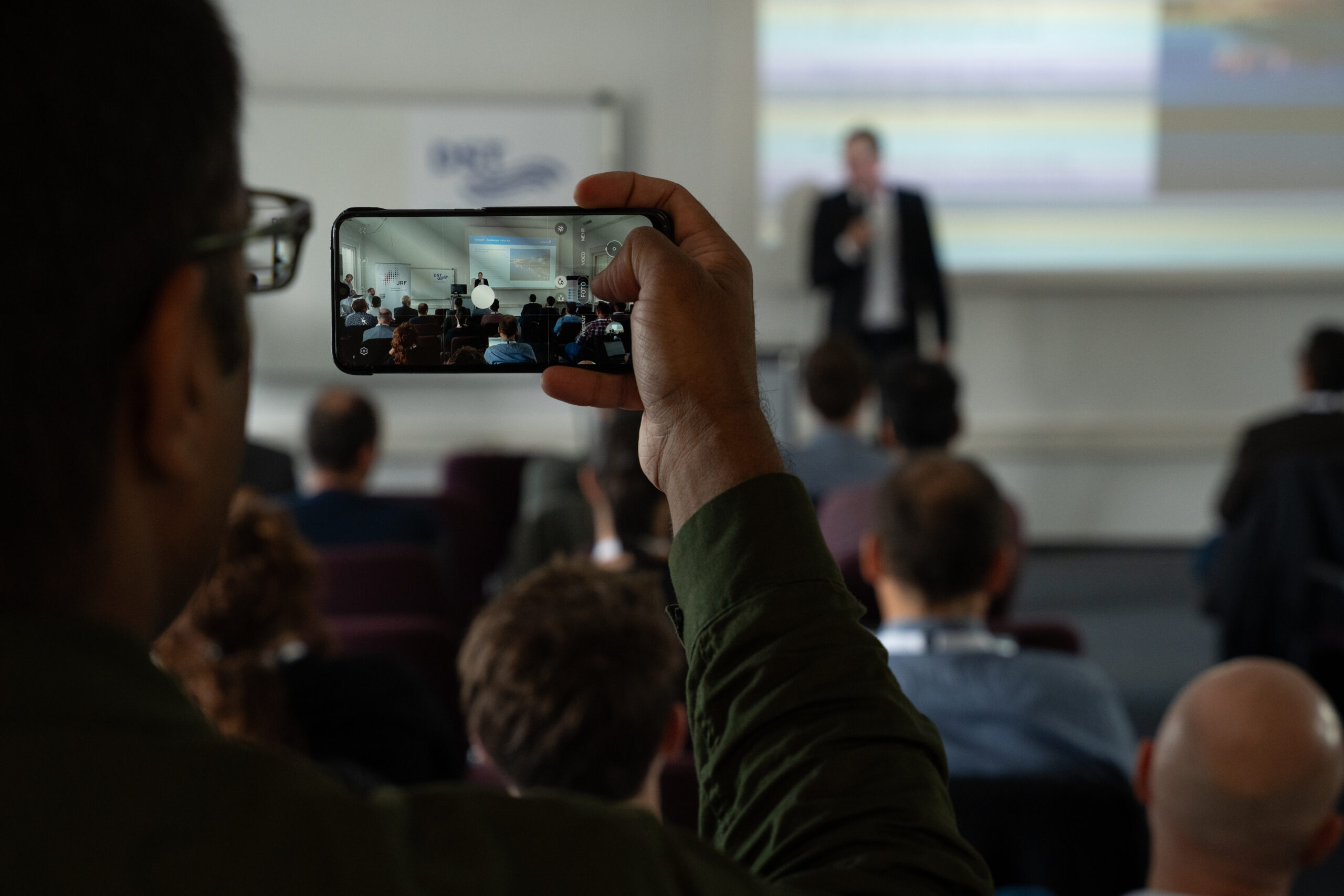
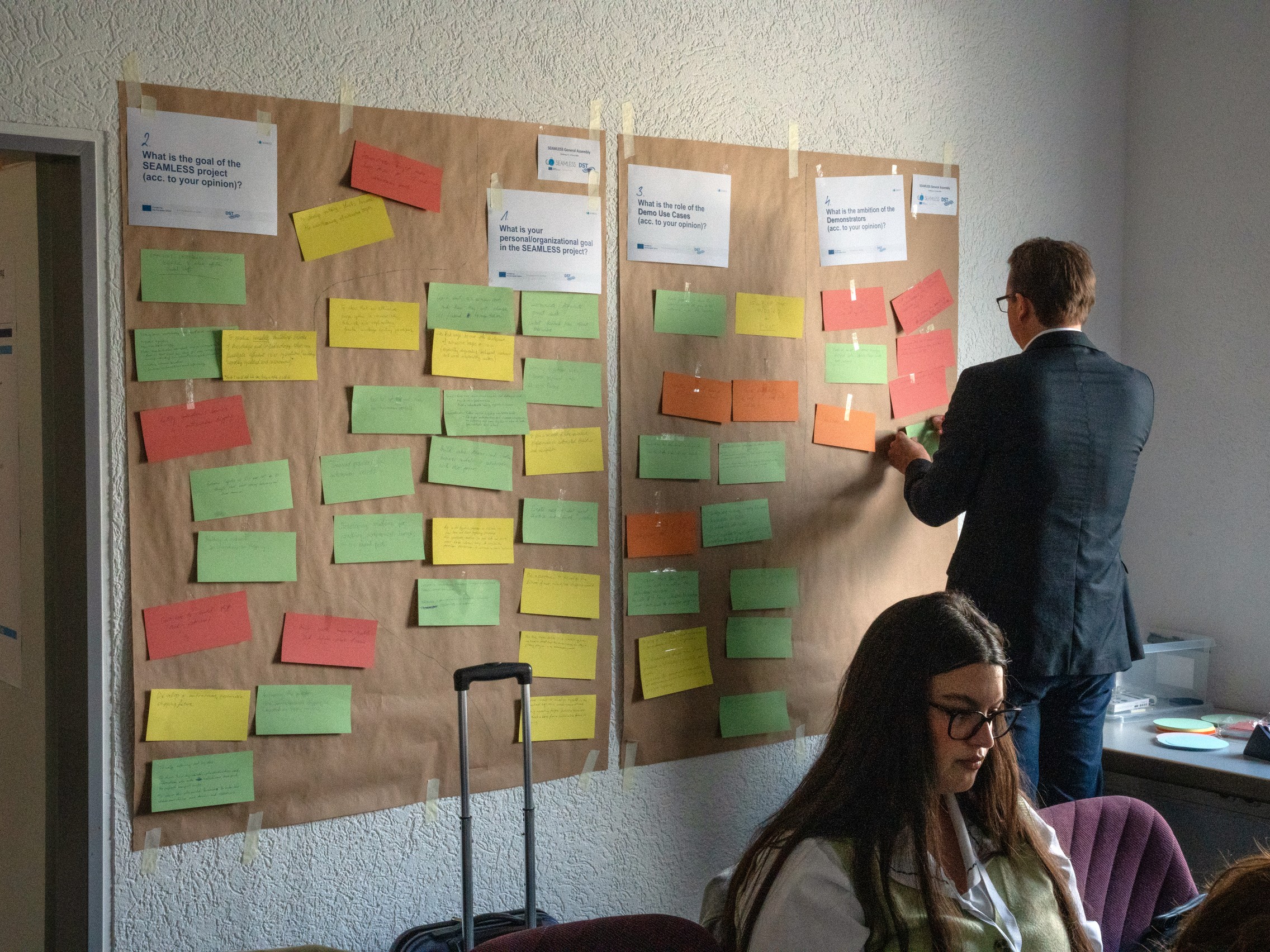
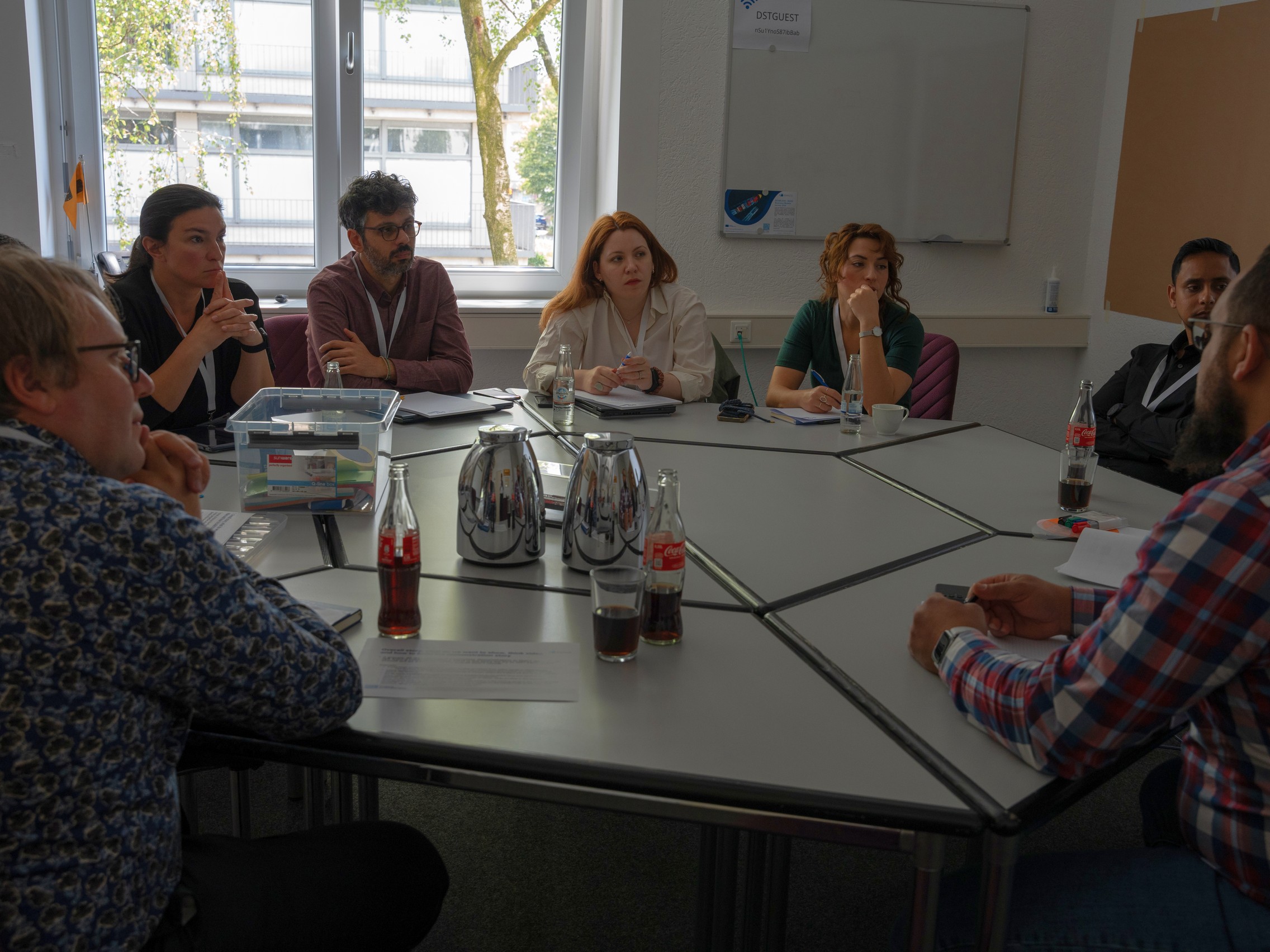
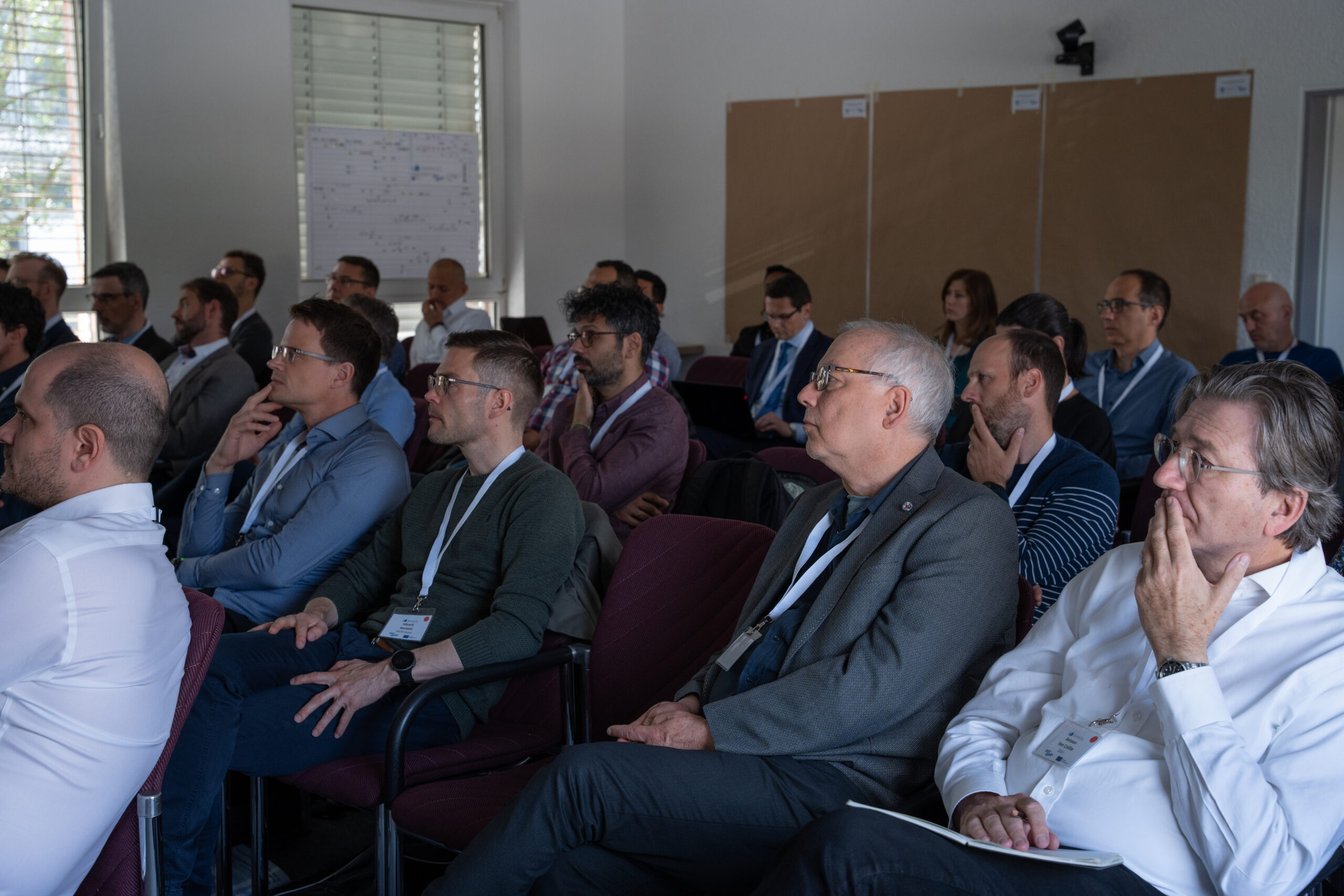
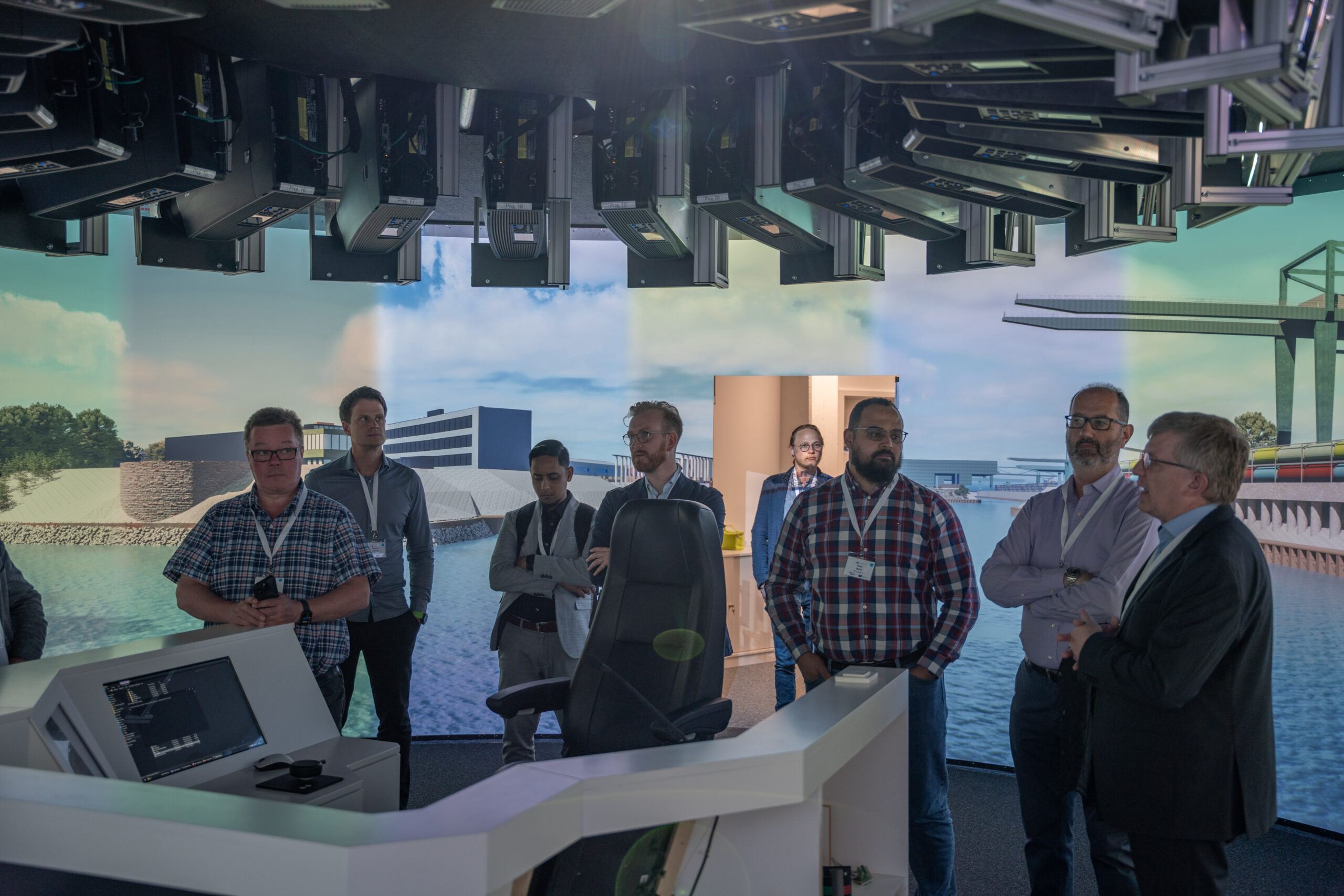
Anschließend wurde die Vision des SEAMLESS-Projekts, die Zielvorstellung der beiden Demonstrationsfälle sowie der jeweilige Funktionsumfang einzelner Innovationen aus dem Projekt in verschiedenen interaktiven Workshopformaten erarbeitet. Dazu fand sich das Konsortium in Kleingruppen zusammen und adressierte verschiedene Leitfragen. Zielsetzung der Workshops war das Erarbeiten eines gemeinsamen Verständnisses des Forschungsvorhabens und seiner Zielsetzungen. Dazu passt auch die laufende Arbeit des DST, mit Hilfe einer sog. Referenzsystemarchitektur die zahlreichen betriebswirtschaftlichen, technischen und logistischen Rahmenbedingungen zu definieren, die die verschiedenen SEAMLESS-Innovationen zu berücksichtigen haben.
Nach dem ersten offiziellen Tag luden Duisburger Hafen AG und DST das Konsortium zur Hauptverwaltung des Duisburger Hafens ein, an dem das Forschungsschiff des DST, ELLA, ebenfalls angelegt hatte. Die europäischen Gäste lernten dort das Hafengebiet in Duisburg-Ruhrort und die Historie des Hafenstandorts kennen, bevor sie an Bord der ELLA gingen und die Ausstattung des Versuchsträgers in Augenschein nahmen.
Abgerundet wurde der Sommerabend mit einer launigen Hafenrundfahrt mit zahlreichem Wissenswerten und Trivia über die verschiedenen Hafen- und Terminalstandorte, einem gemeinsamen Abendessen an Bord und vielen fachlichen und persönlichen Gesprächen über das Forschungsvorhaben und darüber hinaus.
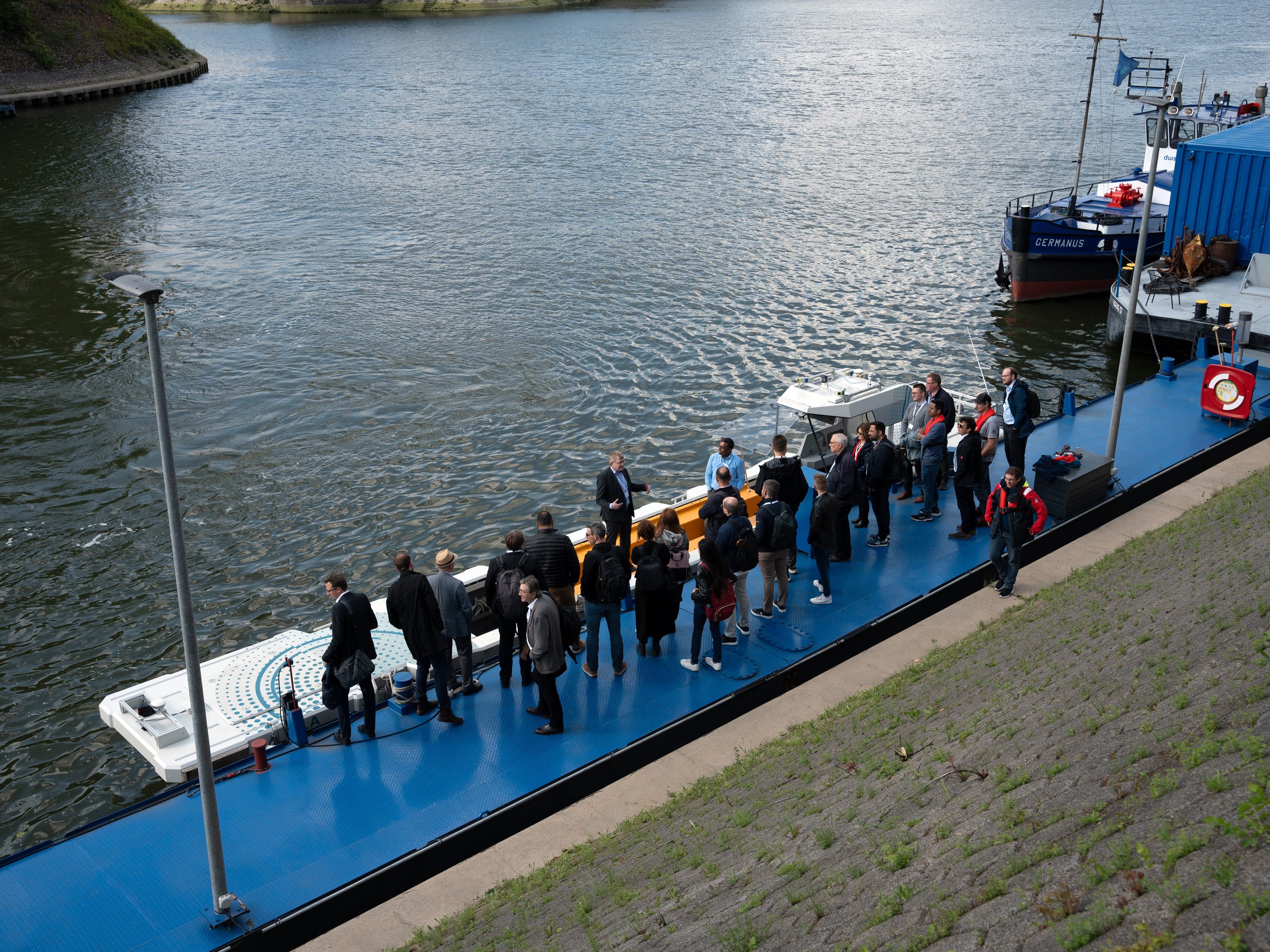
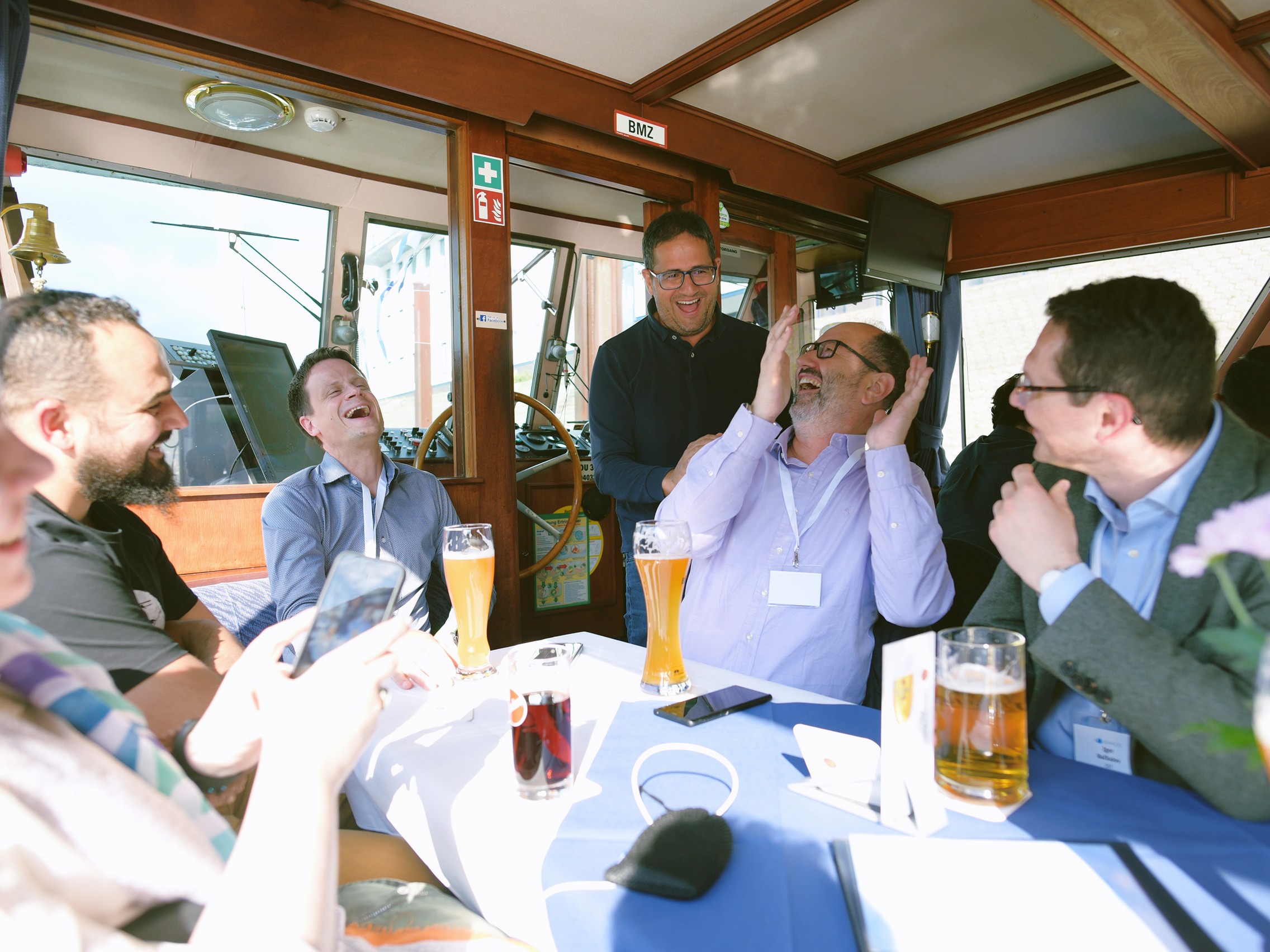
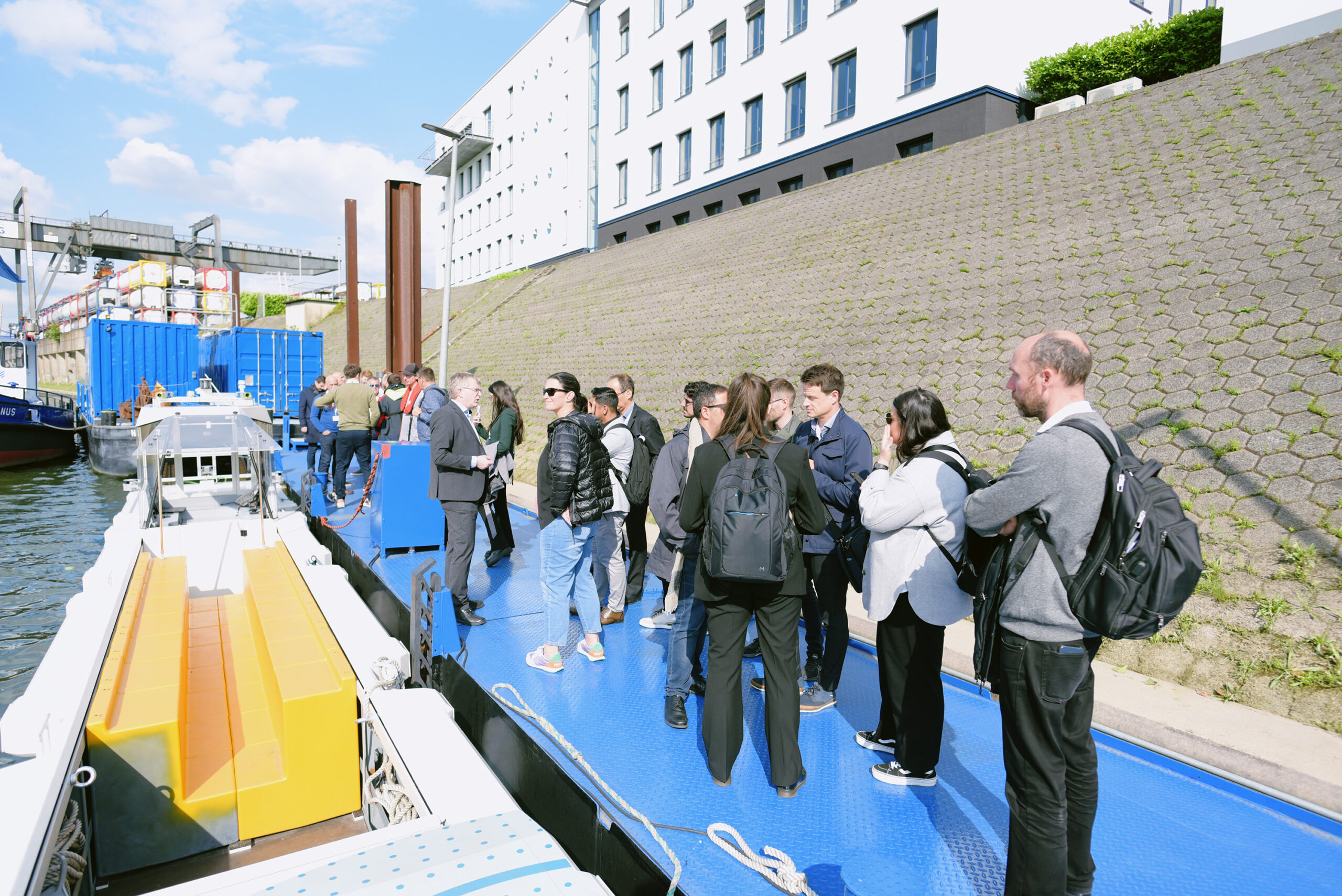
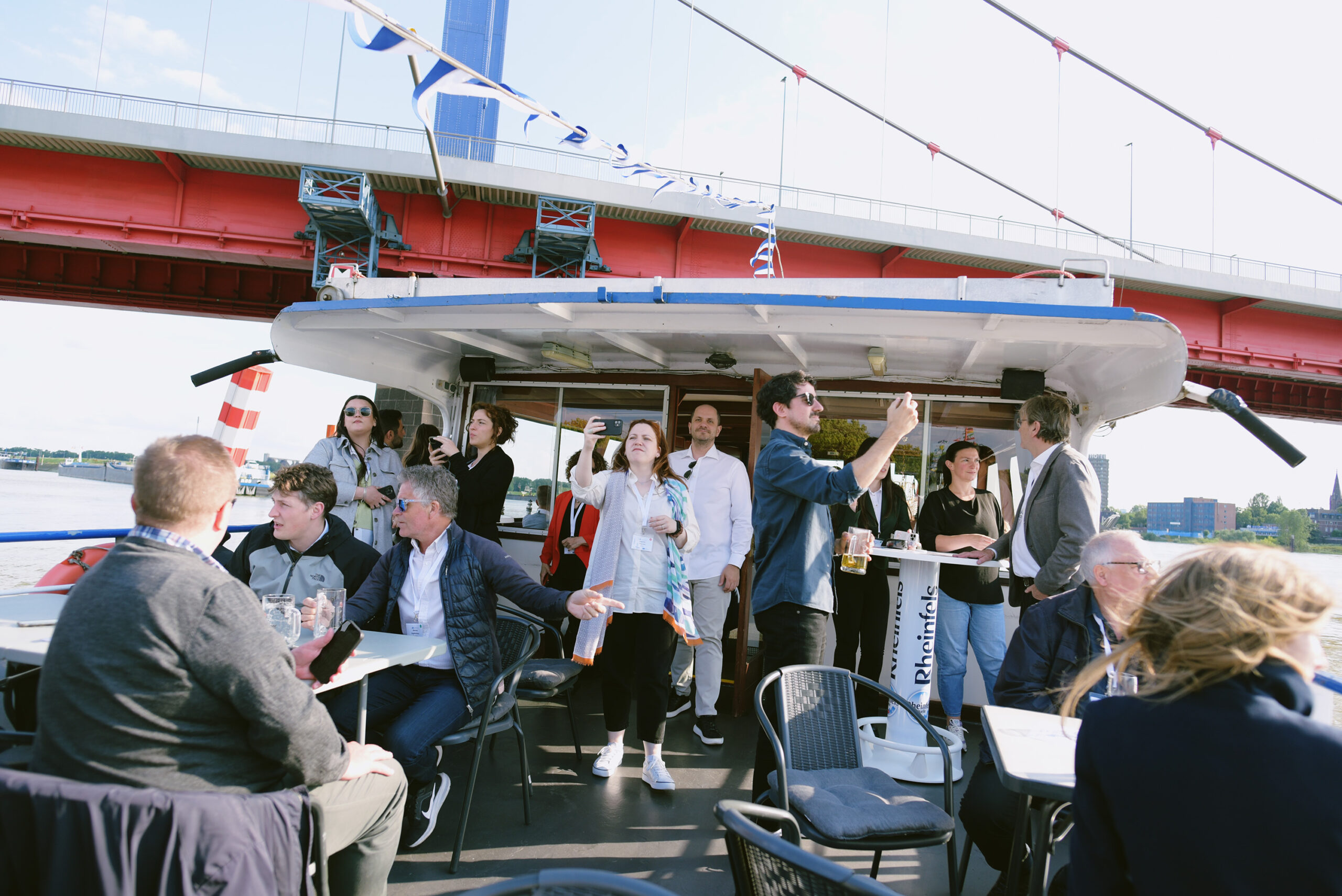
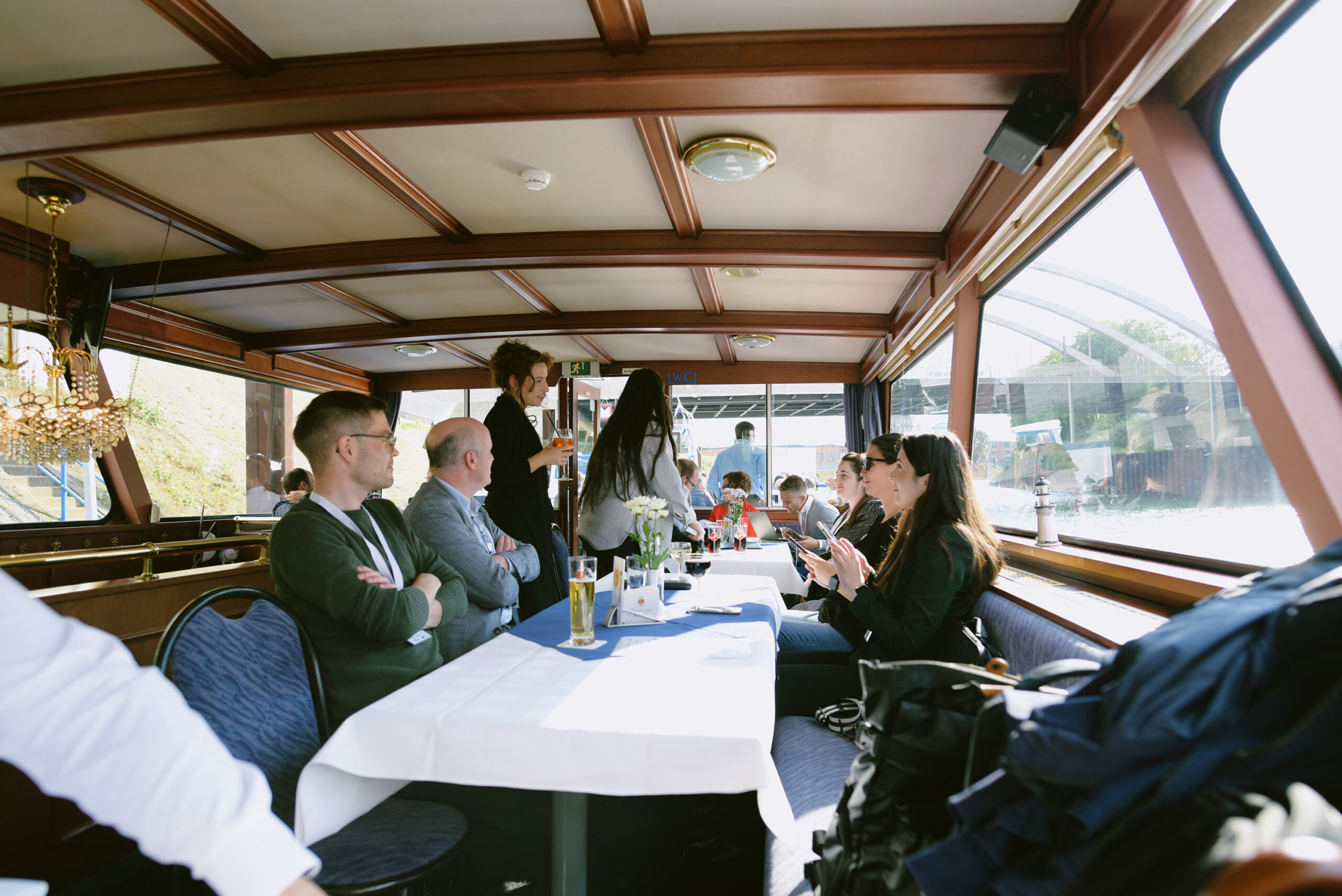
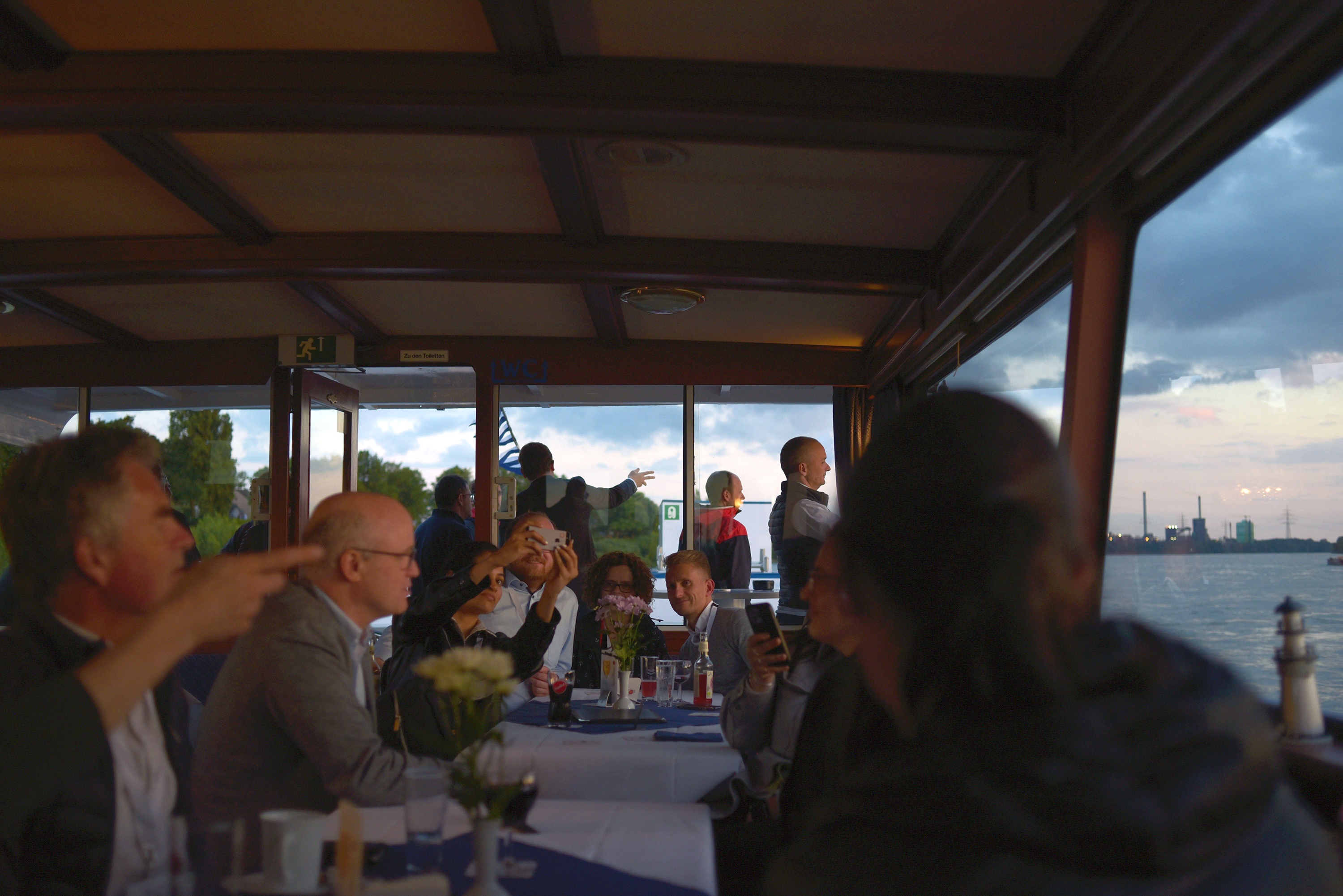
Am Folgetag begrüßte der Geschäftsführer des DST, Dr. Rupert Henn, die Gäste im Versuchszentrum für innovative Hafen- und Umschlagtechnologien, HaFoLa, und hielt einen Vortrag zur Forschungsstrategie „Automatisiertes Fahren auf der Wasserstraße“ des DST und seiner Forschungspartner. Nach einer Nachreichung von Wasserproben der Versuchsbecken von SINTEF Ocean in Trondheim (Norwegen) und der Nationalen Technischen Universität Athen (Griechenland), die als nachträgliche Ergänzung zur Eröffnung des Versuchszentrums vorgesehen war, wurden die jeweiligen Arbeitsstände der verschiedenen Entwicklungsstränge und Arbeitspakete vorgestellt, gemeinsame Entscheidungen zum weiteren Vorgehen im Forschungsvorhaben getroffen und die bevorstehenden Aufgaben und Fristen in den kommenden Monaten diskutiert.
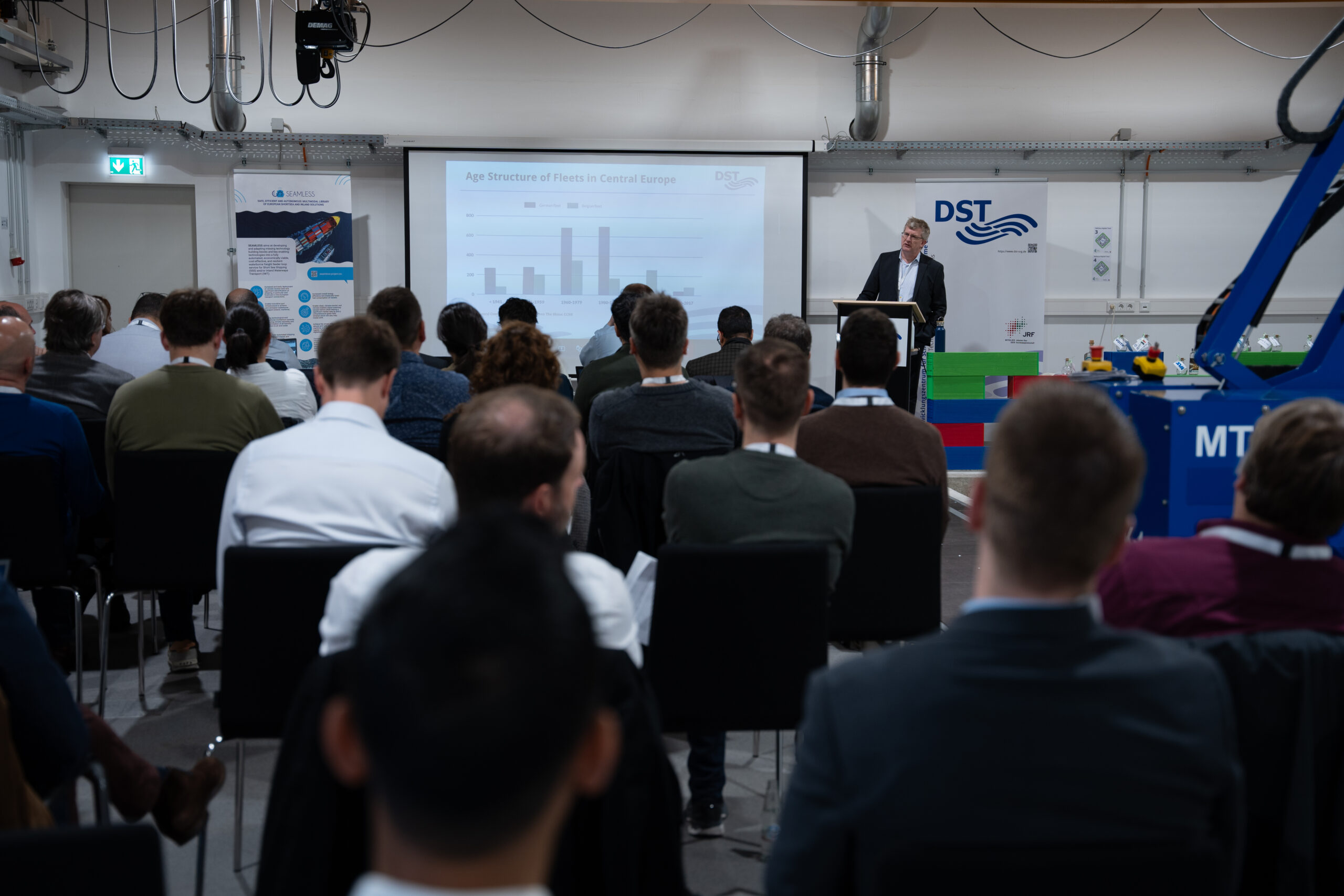
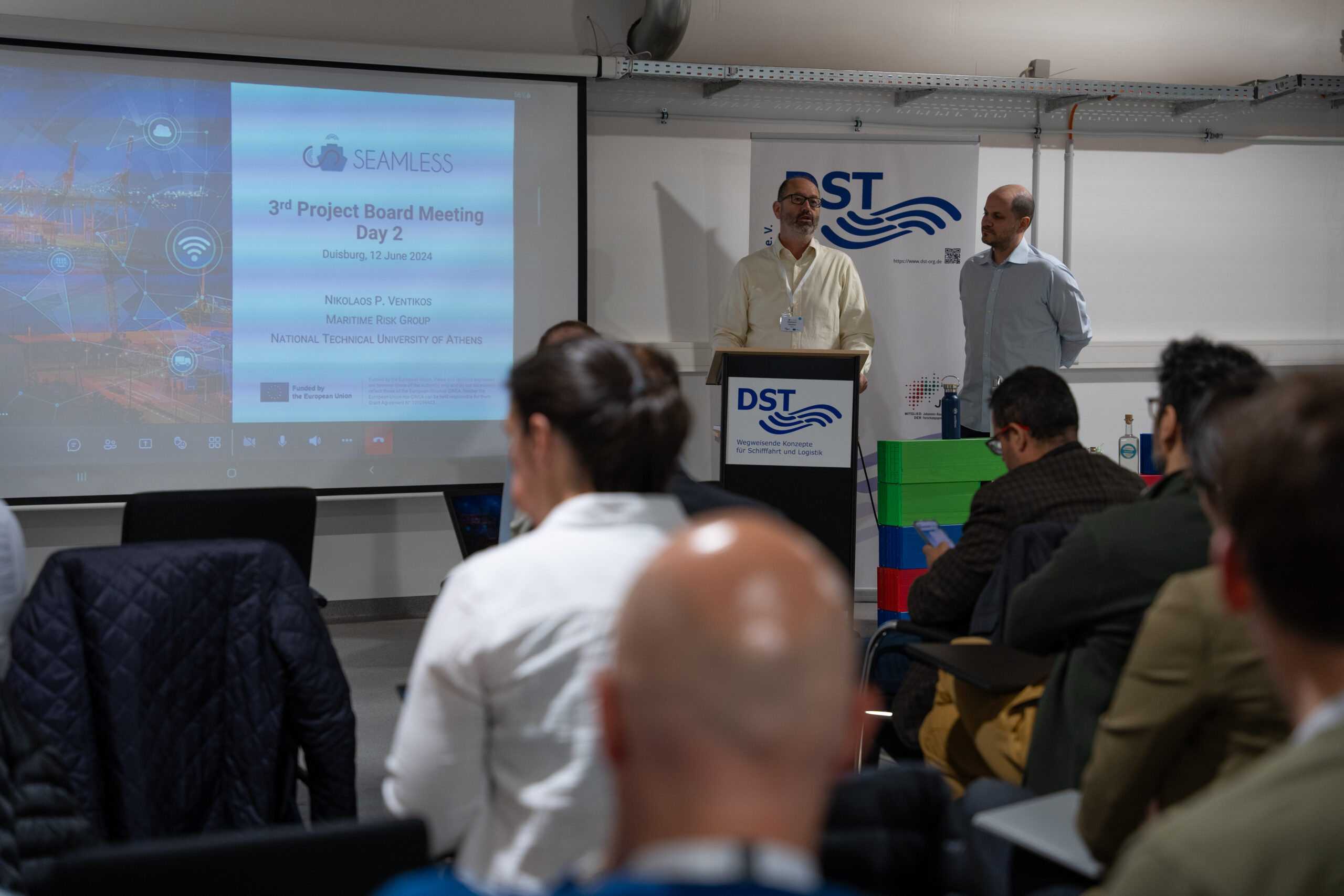
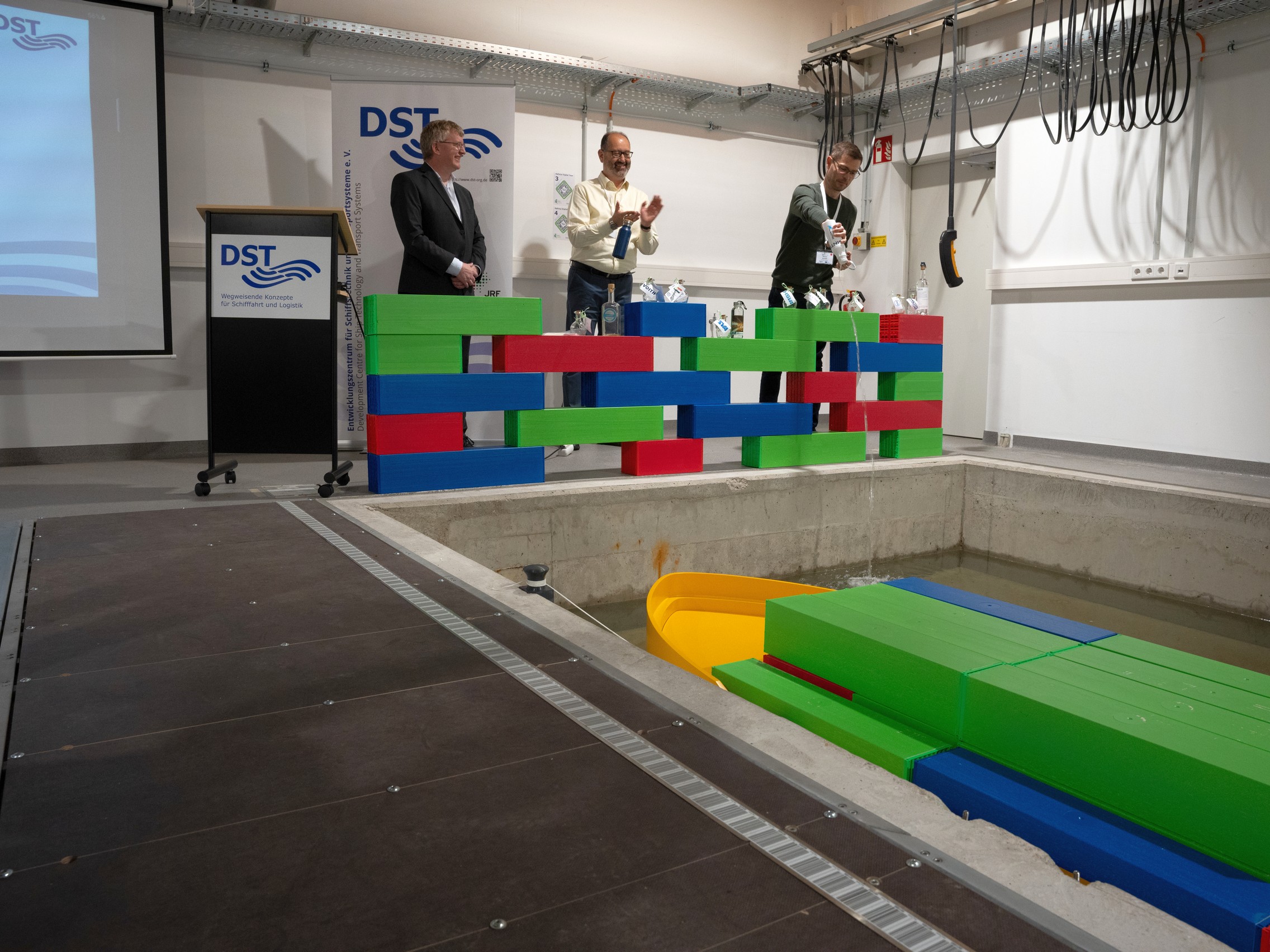
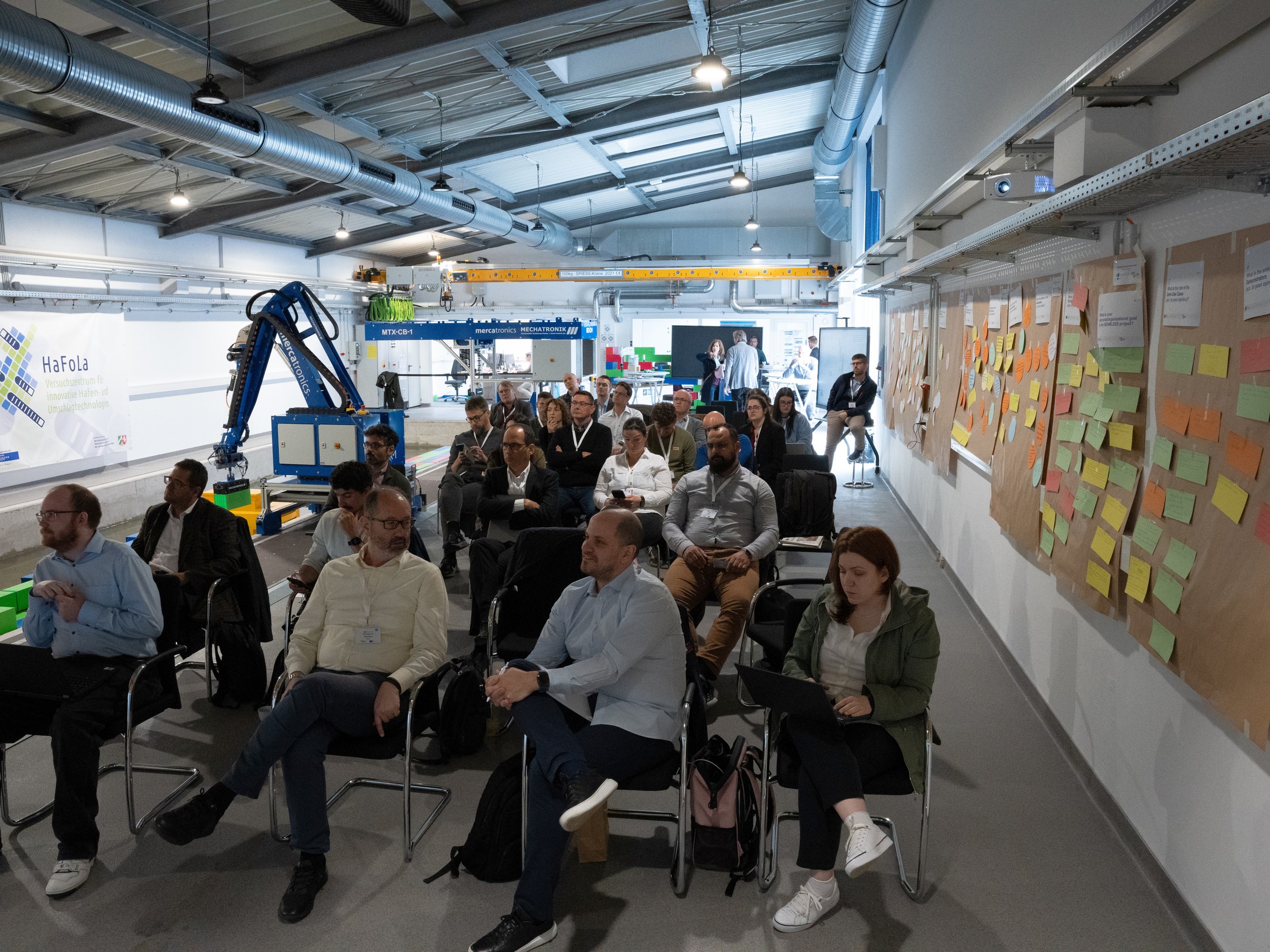
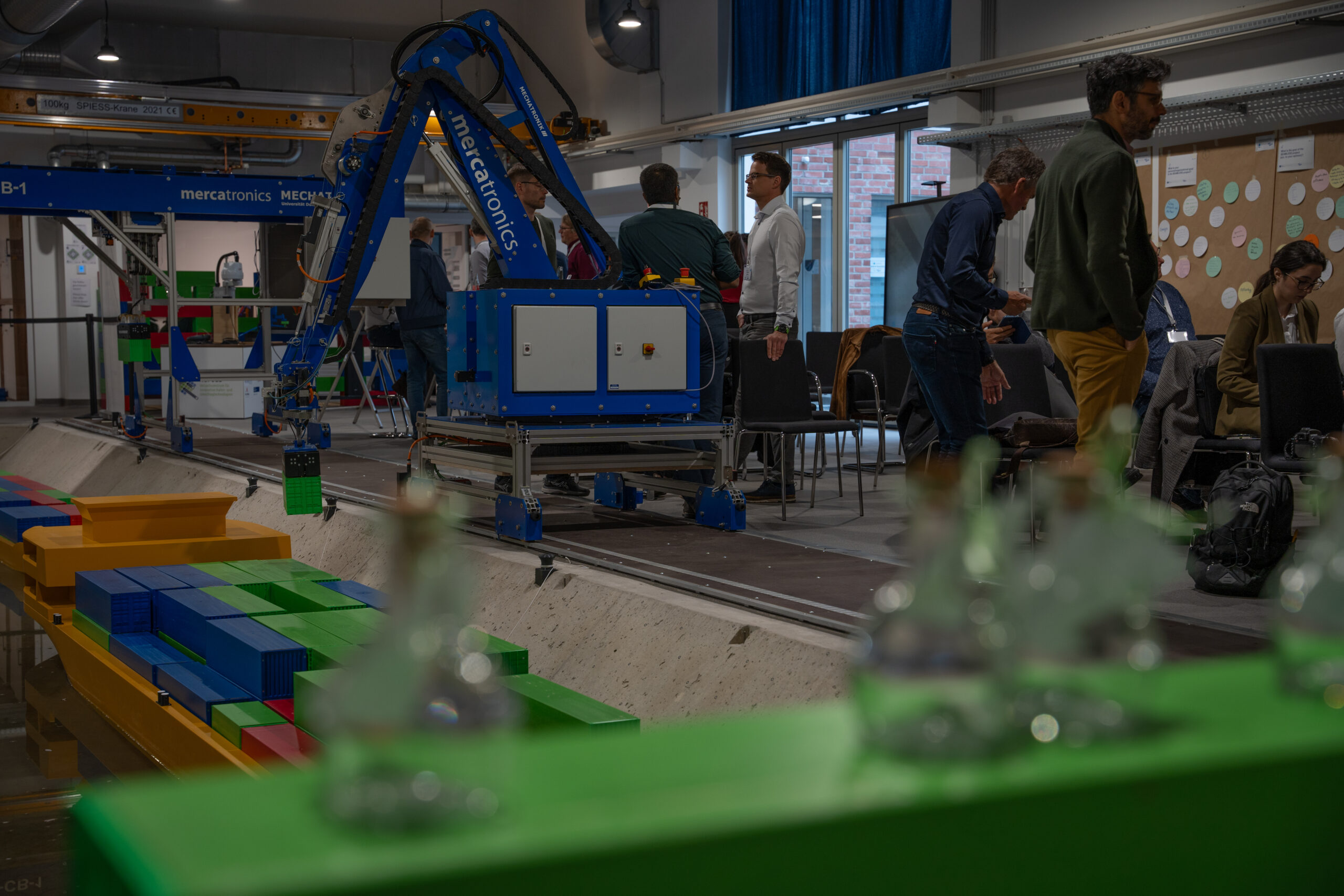
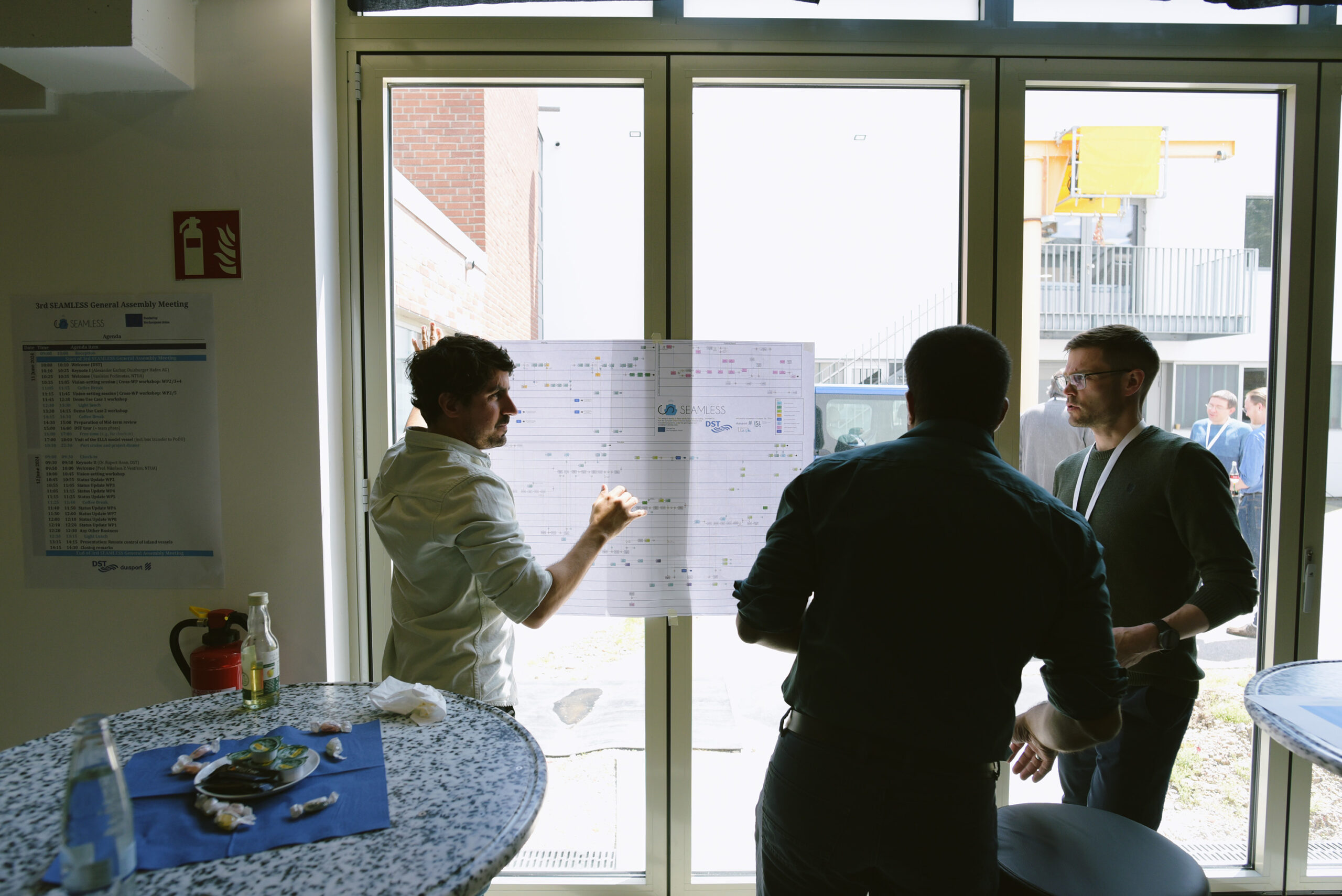
Das DST konnte dem Konsortium dabei sowohl die Zwischenstände seiner Arbeiten an der Referenzsystemarchitektur des SEAMLESS-Projekts als auch an der Konzeptübersicht automatischer Festmachersysteme in der Binnenschifffahrt vorstellen. Zudem wurden Zwischenergebnisse der Forschungsvorhaben CoboTank, RAIN und MultiRELOAD im HaFoLa aus- und vorgestellt. Abgeschlossen wurde das zweitägige Konsortialtreffen mit einer Vorstellung des Versuchs- und Leitungszentrums Autonome Binnenschifffahrt, der Vorführung der Fernsteuerung des Binnenschiffs „Ernst Kramer“ der Reederei Rhenus sowie einem gemeinsamen Mittagessen.
Insgesamt blickt das auf eine erfolgreiche Veranstaltung zurück, die neben dem allgemeinen Austausch zu den Zwischenständen auch eine gemeinsame Vision des SEAMLESS-Projekts und der Demonstratoren zum Ergebnis hatte. Darüber hinaus konnte das DST den Gästen aus sein breites Forschungsportfolio, das mit den Themen Logistik und Automatisierung weit über das bloße Schiffbau-Versuchswesen hinausragt, seine reichhaltige Forschungsausstattung und das breite Ökosystem in der Stadt und der Region vorstellen.
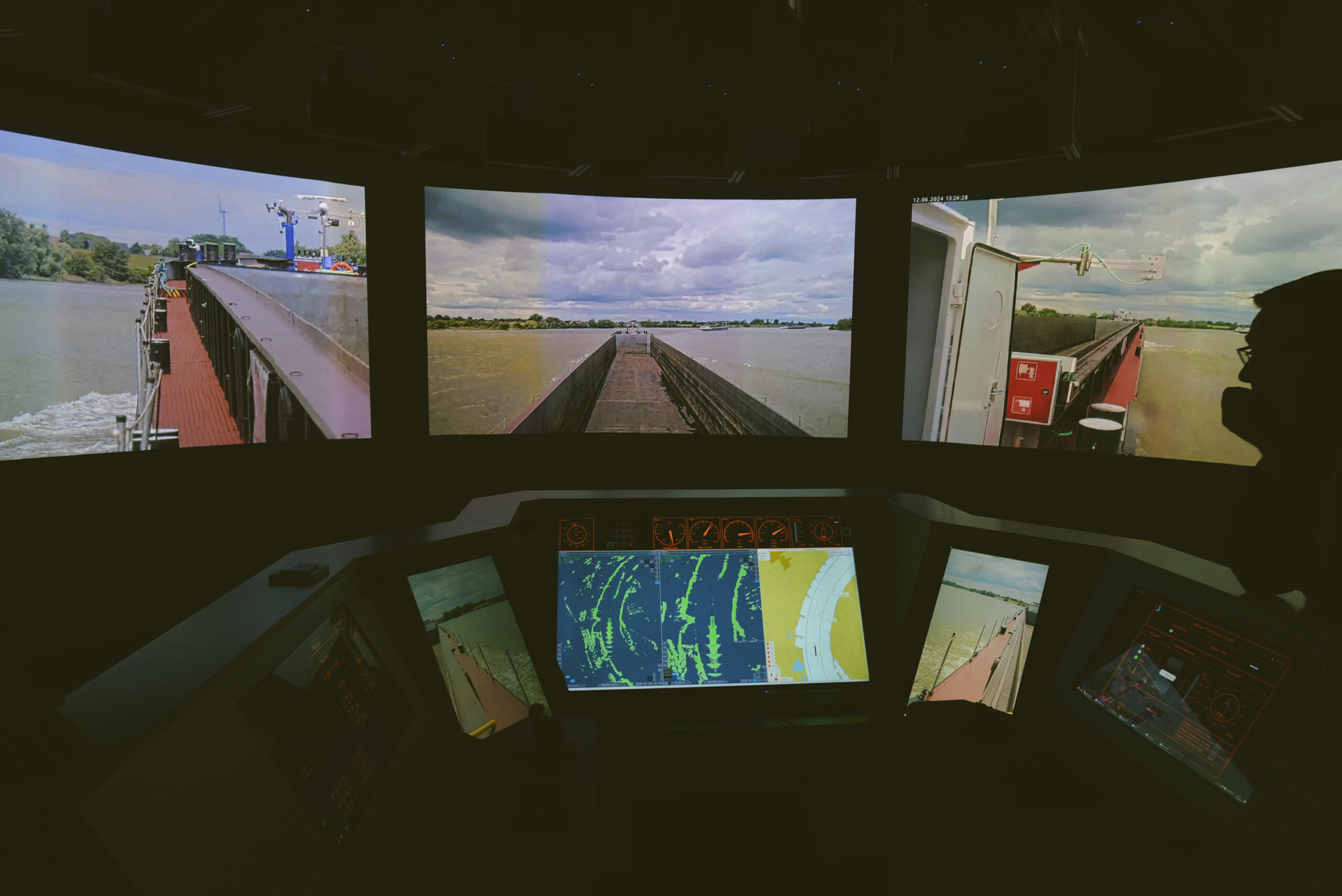
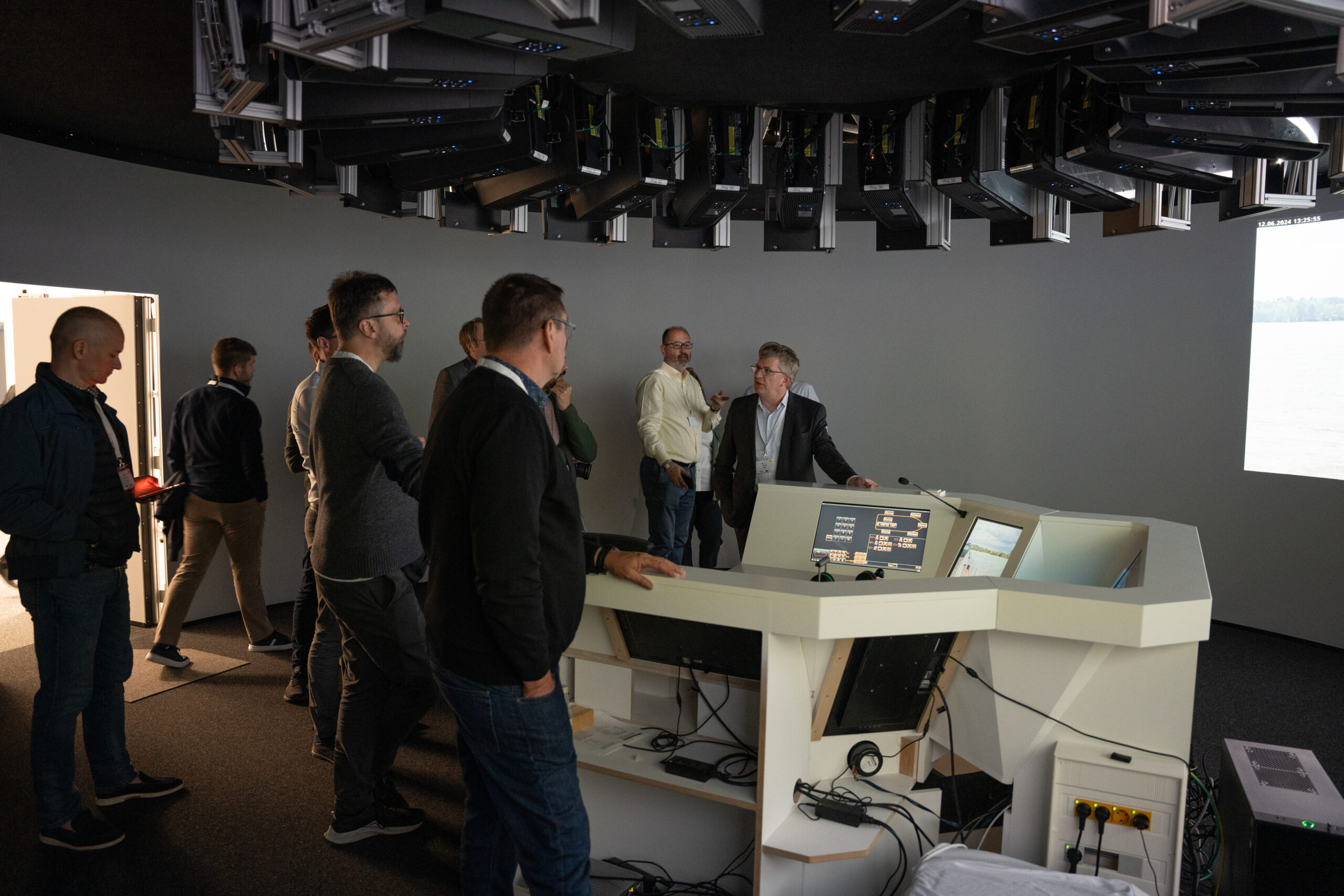
Im Forschungsvorhaben SEAMLESS werden sowohl für den Kurzstreckenseeverkehr als auch für die Binnenschifffahrt Frachtzubringerdienste mit automatisierten Schiffen entwickelt. Weitere Informationen zum Forschungsprojekt SEAMLESS finden Sie hier: SEAMLESS
Ansprechpartner:
Cyril Alias, Tel.: 0203 / 99 369 52, E-Mail: alias@dst-org.de

Das Projekt SEAMLESS wird von der Europäischen Kommission im Forschungs- und Innovationsprogramm Horizont Europa unter der Zuwendungsvereinbarung 101096923 gefördert.